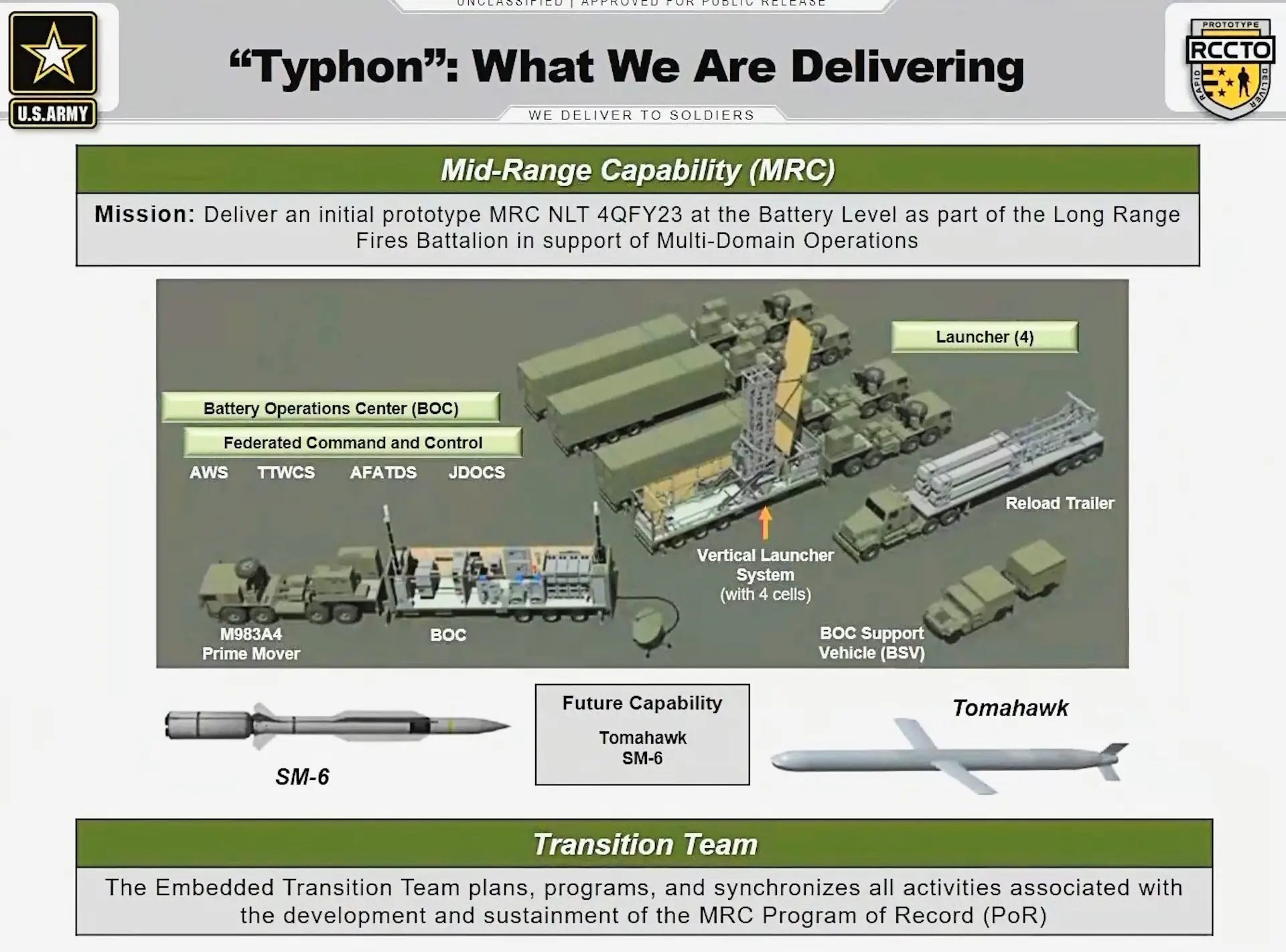US Missiles Creates ‘Typhon’ In China; Beijing Warns Philippines Against Hosting US Systems On Its Soil

On July 27, Chinese Foreign Minister Wang Yi issued a stern warning to his Philippine counterpart, Enrique Manalo, cautioning against the deployment of intermediate-range missiles from the United States.
Wang said that such actions could ignite a regional “arms race,” exacerbating already tense relations between the two nations.
The meeting between Wang and Manalo, held on the sidelines of the Association of Southeast Asian Nations (ASEAN) summit in Vientiane, marked their first publicly acknowledged face-to-face discussion since 2022.
The summit will also facilitate a meeting between Wang and US Secretary of State Antony Blinken. The strained ties between Beijing and Manila are primarily fueled by their conflicting territorial claims in the South China Sea.
This area, particularly around the Second Thomas Shoal—referred to as Renai Jiao by China and Ayungin Shoal by the Philippines—has been a hotspot for military standoffs and disputes.
AfriPrime App link: FREE to download...
https://www.amazon.com/Africircle-AfriPrime/dp/B0D2M3F2JT

While China claims sovereignty over most of the South China Sea, the Philippines, Vietnam, Malaysia, and Brunei also lay claim to parts of the resource-rich waterway. Manila has been notably assertive in contesting Beijing’s claims, leading to frequent clashes near contested reefs in recent months.
On the other hand, China’s concern over the US military presence in the Philippines has intensified, particularly following the deployment of the midrange US missile system, Typhon, to northern Philippines in April.
Philippine troops have undergone training to operate and maintain the Typhon system, although it has not been utilized in live-fire exercises.
Despite the Philippine military’s announcement that the system will be returned to the US in September, Beijing remains wary of the potential for a permanent deployment.
“If the Philippines introduces the US intermediate missile system, it will create regional tension and confrontation, triggering an arms race, which is totally not in line with the interests and aspirations of the Filipino people,” Wang stated.
Wang highlighted the “serious difficulties and challenges” facing China-Philippines relations, attributing the strain to Manila’s alleged violations of bilateral consensus and commitments and continuous maritime infringements.
“China-Philippines relations in recent years have proved time and again that it is not easy to build good relations, but it is easy to destroy them,” Wang remarked.
In May, Chinese Defense Minister Dong Jun also expressed strong opposition to US Defense Secretary Lloyd Austin, arguing that the Typhon missile system posed a significant threat to Asian security and compromised regional peace and stability.
Typhon Weapons System
The presence of the Typhon missile system in the Philippines marks the first midrange missile launcher deployment by the US in the Indo-Pacific region since the Cold War, specifically on the first island chain in Asia. This strategic move underscores a significant shift in US military presence in the area.
This land-based, ground-launched system enhances the military’s multi-domain capabilities. The launcher can fire the Standard Missile 6 (SM-6) and the Tomahawk Land Attack Missile (TLAM), with operational ranges of over 240 km (150 miles) and 2,500 km (1,550 miles), respectively.
AfriPrime App link: FREE to download...
https://www.amazon.com/Africircle-AfriPrime/dp/B0D2M3F2JT
The Typhon system’s reach includes most of the South China Sea, Taiwan, and critical coastal cities in eastern and southern China. From northern Luzon, the system can target the southeastern corner of mainland China and Hainan Island, which houses key naval bases.Additionally, Chinese man-made outposts across the South China Sea fall within Typhon’s range. This extensive coverage is a primary reason for China’s apprehension regarding the deployment of such a weapon system.
A complete Typhon battery comprises four launchers, a trailer-based mobile command post, and various ancillary vehicles and equipment. Moving a single Typhon battery would require multiple C-17A sorties.

The system’s capability to fire Tomahawk cruise missiles, which have both land attack and anti-ship capabilities, along with SM-6 missiles, adds to its strategic value.
The SM-6, integrated into Typhon, is designed as a short-range ballistic missile that can target both land and sea assets. It is described as a “strategic” weapon system intended for higher-value targets like air defense assets and command and control nodes.
With the Tomahawk, Typhon provides the Army with the ability to target land and sea threats within a range of over 1,000 miles from its deployment site. The added capability of firing SM-6s as surface-to-surface weapons enhances operational flexibility.
Although the Typhon system is scheduled to be withdrawn from the Philippines in September, experts note that its deployment has sent a clear message to Beijing.
The US has demonstrated its ability to quickly redeploy such midrange missile systems, thereby asserting its military presence and strategic interests in the region.
AfriPrime App link: FREE to download...
- Questions and Answers
- Opinion
- Story/Motivational/Inspiring
- Technology
- Art
- Causes
- Crafts
- Dance
- Drinks
- Film/Movie
- Fitness
- Food
- الألعاب
- Gardening
- Health
- الرئيسية
- Literature
- Music
- Networking
- أخرى
- Party
- Religion
- Shopping
- Sports
- Theater
- Wellness
- News
- Culture
- War machines and policy

